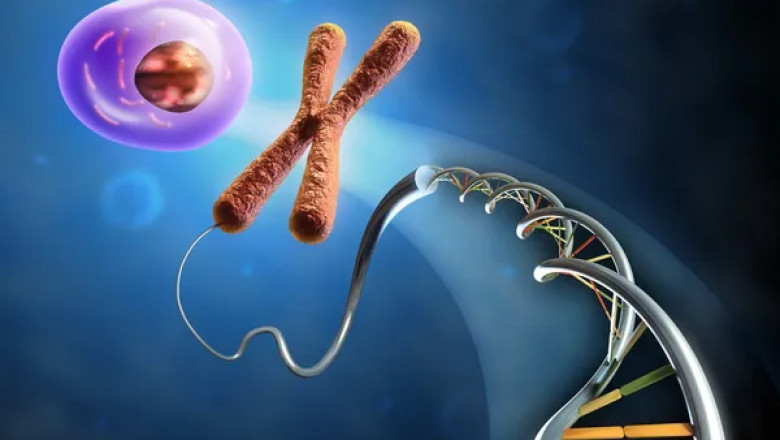views
In the rapidly evolving landscape of molecular biology, few innovations have shown as much therapeutic promise as targeted protein degradation. This groundbreaking strategy has opened up new frontiers in drug discovery by enabling the selective removal of disease-causing proteins, even those traditionally considered “undruggable.” One of the most recent and exciting breakthroughs in this field is the use of GID4-based PROTACs (PROteolysis TArgeting Chimeras), a novel approach that is redefining the way scientists design small molecule therapeutics.
For molecular biologists and biomedical researchers, the ability to selectively degrade malfunctioning proteins holds the key to treating a wide array of diseases, including cancer, neurodegenerative disorders, and autoimmune conditions. As such, timely dissemination of these advancements is essential—and that begins with choosing the right avenue for molecular biology research publishing.
🔬 Understanding Targeted Protein Degradation and PROTACs
Targeted protein degradation represents a paradigm shift in drug development. Unlike conventional inhibitors that merely block the active site of a protein, PROTACs guide the degradation of the entire protein by hijacking the cell’s natural protein-disposal system: the ubiquitin-proteasome pathway.
A typical PROTAC is a bifunctional molecule composed of:
- A ligand that binds to the protein of interest.
- A ligase recruiter that binds to an E3 ubiquitin ligase.
- A linker connecting both moieties.
Once administered, the PROTAC molecule brings the target protein into proximity with an E3 ligase, facilitating its ubiquitination and subsequent destruction by the proteasome. This approach not only inhibits protein function but permanently removes it from the cell.
🧬 The Role of GID4 in Next-Generation PROTACs
Recent research has identified GID4, a substrate receptor of the GID E3 ubiquitin ligase complex, as a viable candidate for PROTAC development. In a pioneering study, scientists successfully constructed a GID4-recruiting PROTAC capable of degrading BRD4, a well-known transcriptional regulator involved in cancer proliferation.
The crystal structure of the GID4–PROTAC–BRD4 ternary complex reveals a high degree of binding specificity and efficiency. This discovery expands the E3 ligase toolbox beyond commonly used systems like CRBN and VHL, offering researchers a more diverse set of molecular handles to work with.
Key advantages of GID4-based PROTACs include:
- Tissue specificity: Expression patterns of GID4 can be exploited to target degradation to specific tissues.
- Reduced off-target effects: Improved selectivity limits unintended protein degradation.
- Therapeutic versatility: Potential to design degraders for proteins that are otherwise inaccessible through conventional ligands.
🌍 Applications and Therapeutic Impact
The implications of GID4-based targeted protein degradation are vast:
- Cancer Therapy: Degradation of oncogenic proteins like BRD4 or Myc that are resistant to traditional inhibition.
- Neurodegeneration: Clearing abnormal protein aggregates in diseases like Alzheimer’s or Parkinson’s.
- Autoimmune Diseases: Regulating overactive immune response proteins.
- Infectious Diseases: Targeting viral proteins or host factors essential for pathogen survival.
As this field advances, researchers working on such molecular solutions must engage in timely and reputable molecular biology journal submission to share their findings and catalyze clinical translation.
📚 Why Our Platform Supports and Elevates Molecular Biology Research
Innovative scientists need more than just a publishing space—they need a collaborative, credible, and impactful journal environment. Here’s how we empower molecular biology researchers working on next-gen protein degraders:
1. Focused Editorial Expertise
Our editorial board includes seasoned researchers with deep expertise in molecular biology, chemical biology, and targeted therapeutics. Whether you’re submitting a study on ligand optimization or E3 ligase profiling, your work will be reviewed by professionals who understand its significance.
Researchers looking for top-tier molecular biology research publishing venues will find our journal a powerful ally in advancing global recognition and research credibility.
2. Fast and Rigorous Peer Review
We value your time. Our streamlined double-blind peer review process ensures:
- Rapid feedback from domain experts.
- Constructive revision suggestions that improve manuscript quality.
- Transparent communication from submission to acceptance.
When you submit molecular biology manuscript, your ideas reach decision-makers, innovators, and collaborators faster than traditional slow-moving pipelines.
3. Global Reach through Open Access
Your work deserves global attention. With our open-access model, your findings on GID4-based PROTACs are instantly available to:
- Academics and students.
- Industry professionals.
- Clinicians and drug developers.
Unrestricted access maximizes citations and collaboration opportunities, ensuring that your work has both scientific and societal impact.
4. Author-Centric Publishing Experience
We offer:
- Detailed submission guidelines tailored for molecular biology content.
- Support for advanced figure formatting and graphical abstracts.
- Assistance with ethics compliance and data transparency.
- Options for pre-submission inquiries and fast-track review (when applicable).
Publishing with us isn’t just a submission—it’s a partnership.
🧠 Trending Molecular Biology Topics We Welcome
We actively encourage submissions in areas including:
- Targeted protein degradation and PROTAC development.
- E3 ligase discovery and structural biology.
- Post-translational modification mechanisms.
- Synthetic biology applications in therapeutics.
- RNA-based editing and regulatory pathways.
- Molecular diagnostics and biomarker identification.
If your research aligns with any of these themes, we invite you to explore our molecular biology journal submission guidelines and become part of our growing network of contributors shaping the future of biomedical science.
Conclusion
The development of GID4-based PROTACs marks a significant step forward in the quest to selectively dismantle disease-driving proteins. As this strategy gains traction across academic labs and biotech startups, it is imperative that researchers share their discoveries through impactful, respected publishing channels.
Whether you’re a principal investigator, graduate researcher, or biotech innovator, the decision to submit molecular biology manuscript today could help drive tomorrow’s medical breakthroughs.
By choosing a publishing platform that prioritizes speed, visibility, and scientific rigor, your research doesn’t just enter the literature—it enters the conversation that shapes modern medicine.
The next chapter in molecular therapeutics begins now—with your contribution.






















Comments
0 comment